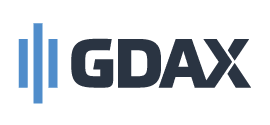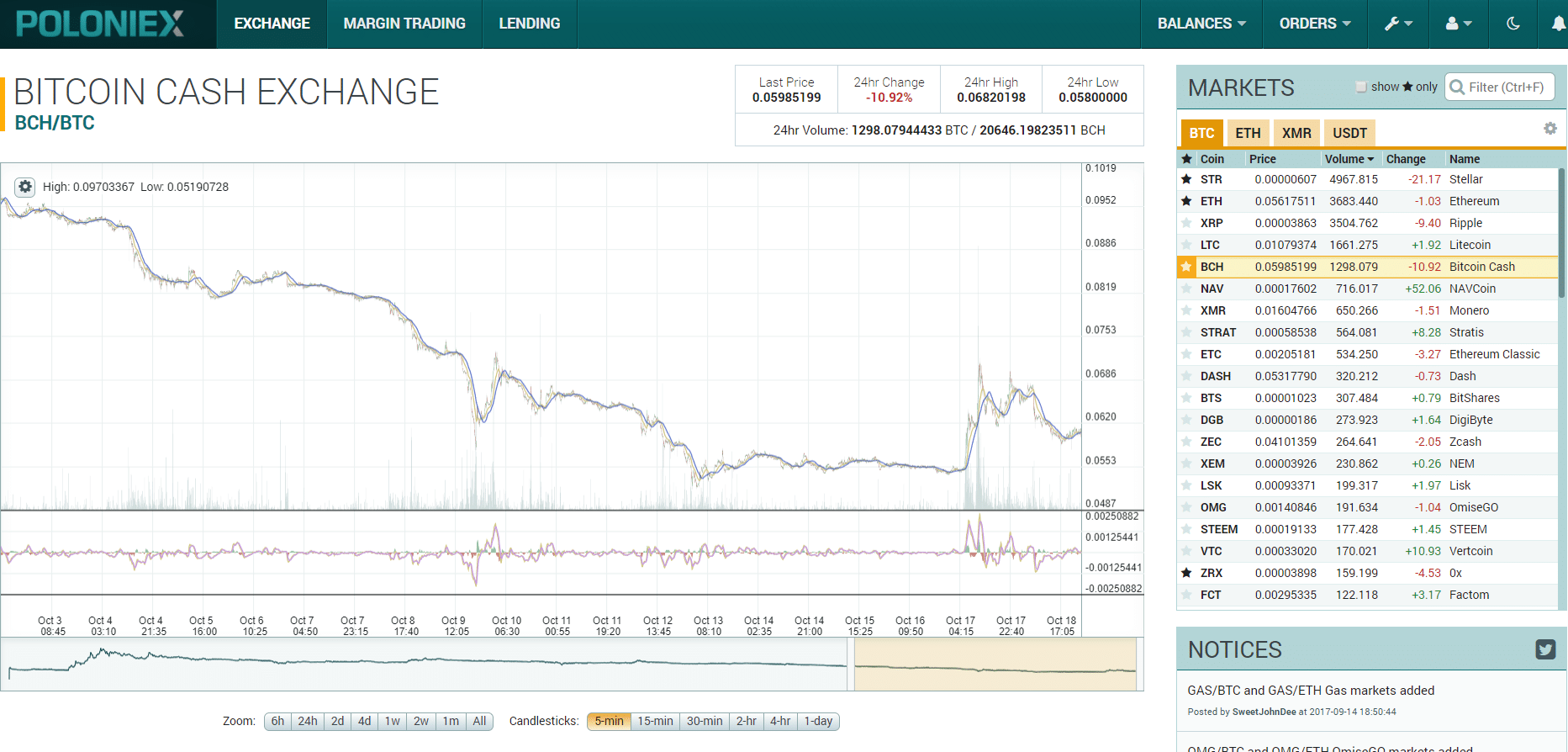- GDAX vs Poloniex: Key Information
- Poloniex, The Alt-Coin Option
- Customer Support
- Both Companies Are Trusted by the Community
- Safe and Secure
- Fees
- Available Cryptocurrencies
- GDAX vs Poloniex: Final Thoughts
GDAX and Poloniex are both leading exchanges. GDAX is commonly recommended for new users, while Poloniex is suggested for advanced users. But why?
In this GDAX vs Poloniex comparison, we’re going to show you the key differences between both exchanges so that you can choose which one is right for you.
Note: Recently Poloniex users have been complaining about customer support tickets taking weeks or even months to get handled. Be cautious using Poloniex.
GDAX vs Poloniex: Key Information
 |
||
| Reviews | ||
| Site Type | Cryptocurrency Exchange | Cryptocurrency Exchange |
| Beginner Friendly | ||
| Mobile App | ||
| Buy/Deposit Methods | Bank Transfer (ACH), Bank Wires, Crypto Deposits | Cryptocurrency |
| Sell/Withdrawal Methods | Bank Wires, Bank Transfer, Cryptocurrency, Coinbase Account | Cryptocurrency |
| Available Cryptocurrencies | Bitcoin, Ethereum, Litecoin | Bitcoin, Ethereum, Litecoin, and 90+ more |
| Company Launch | 2012 | 2014 |
| Location | San Francisco, CA, USA | Delaware, USA |
| Community Trust | Great | Okay |
| Security | Great | Good |
| Customer Support | Good | Poor |
| Fees | Very Low | Very Low |
| Site | Visit GDAX | Visit Poloniex |
As you might have notice in the above table, one major difference between these exchanges is their deposit and withdrawal methods. While GDAX allows users to deposit fiat currencies (USD, EUR) through bank transfers, Poloniex deal entirely in cryptocurrency. This means that if you do not already own cryptocurrency, you will have to use GDAX or another exchange to first buy cryptocurrency, then deposit it to use on Poloniex.
Poloniex, The Alt-Coin Option
Alt-coins, a term used to describe any coin other than Bitcoin, find their home on Poloniex. While Poloniex has a bad reputation when it comes to customer support, they are not lacking when it comes to coin offerings. With over 90 different coins available to trade, it’s easy to see why so many day traders are drawn to Poloniex.
Conversely, GDAX only offers Bitcoin, Ethereum, and Litecoin. While that’s excellent for someone who wants to buy a few of the major coins here and there, it’s not ideal if you’re looking to put some altcoins in your portfolio.
Using Poloniex takes some getting accustomed to. On the right, you’ll see a list of all the different cryptocurrency exchanges available. See those tabs along the top? That indicates the main trading currency.
In the above screenshot, everything is traded in BTC. So When it says STR, it really means STR/BTC. You’ll buy STR with Bitcoin, and sell STR for Bitcoin.
If we click over to the ETH tab, you’ll see:
Now, every currency pair is for Ethereum. So, where it says OMG, it’s really saying OMG/ETH.
Right below the chart, you’ll have the options to buy or sell in the chosen currency pair. It’s rather intuitive: you input how much you want to buy and hit ‘Buy’, or how much you want to sell and hit ‘Sell.’
GDAX is a little more user-friendly. Here’s what the platform looks like after you’ve set up your account:
In the upper left, you select your trading pair. Just below that, you’ll be able to deposit to fund your account or withdraw to cash out. If you’d like to buy or sell, you select the appropriate option and input the amount of USD you’d like to spend or the amount of BTC you’d like to sell. You name your price, and when an order matches that price, it’ll sell (or buy) automatically.
Overall, GDAX is easier to use and has a more pleasing interface. It’s also owned by, and integrated with, Coinbase. Existing Coinbase users have easy verification and already have 2FA built in.
Meanwhile, Poloniex has an interface that looks like it’s straight out of the early 2000’s. It has not been modernized, although it’s definitely usable. Poloniex has the alt-coin advantage, however. They are one of the leading exchanges for buying and selling alt-coins.
So, you have to ask yourself when deciding which exchange to use, do you care about alt-coins? If you only care about buying Bitcoin, go for GDAX. If you want to buy STR, 0X or Dogecoin, head on over to Poloniex.
Customer Support
Customer support is of the utmost importance in the cryptocurrency world. Unfortunately, Poloniex has a reputation for having abysmal customer support. Reddit has a laundry list of posts that show people having bad experiences, or no experiences, with customer support.
Poloniex has a long way to go with their customer support before we can give them a firm recommendation. Even as the leaders in the alt-coin world, they simply require a handful of newly trained agents, or even open a full-on the call center.
Conversely, GDAX has a robust FAQ accompanied by an easy-to-use form to contact customer support. To take it a step further, GDAX is surprisingly offering phone support. You can reach GDAX customer support at 1-888-908-7930. You can also reach them on Twitter @GDAX_Support.
While GDAX customer support has come under some criticisms in the past for not offering phone support, they have clearly gone above and beyond to correct this issue.
Sorry, Poloniex, but this round goes to GDAX.
Both Companies Are Trusted by the Community
While Poloniex has a poor reputation for customer support, both GDAX and Poloniex are trusted options in the cryptocurrency community.
GDAX started as an exchanged called Coinbase Exchange in 2015. In May of 2016, they rebranded to the name GDAX along with offering Ethereum. Coinbase and GDAX are both operating under the BitLicense from the New York State Department of Financial Services, allowing the company to operate within New York. Funds up to $250,000 are FDIC insured.
The history of Poloniex is less clear. We know they were launched in 2014 and that they’re based in the United States. Other than that, Poloniex does not make much information about themselves publicly available.
Safe and Secure
Both exchanges promise to keep your funds safe and secure. Have they been successful in this endeavor?
Poloniex was hacked in 2014 due to a hacker discovering an exploit in their software. A reported 12.3 percent of total Bitcoin was lost. The software has been fixed and a response deemed by the community as satisfactory was provided. Since then, there have been no major hacks.
GDAX, on the other hand, has only experienced a flash crash caused by a multi-million dollar sell order. This sell order caused the price of Ethereum to plummet from over $300 to under $1. Fortunately, GDAX handled the matter with grace and made matters right using their own funds. Not necessarily a hack, but worth mentioning.
Funds stored in GDAX are FDIC insured, up to $250,000. Poloniex does not offer the same protection.
Poloniex claims that the majority of funds are stored in an air-gapped cold storage. They only keep enough online to facilitate trading. GDAX also keeps 98% of funds offline in cold storage.
Fees
Poloniex also has low fees, with fees at or below .25%. Fortunately, there are no fees for deposits, but there are withdrawal fees. These fees are charged by the cryptocurrency network itself, not by Poloniex.
GDAX has extremely low fees, with no fees on maker trades. Taker fees start at .25%, with a discount based on volume dropping the fees to .1%. Just like Poloniex, there are no deposit fees and network-based withdrawal fees.
The lack of maker fees gives the win to GDAX, although both exchanges can be proud of offering low fees.
Available Cryptocurrencies
GDAX only offers Bitcoin, Ethereum and Litecoin (the same cryptocurrencies you can purchase on Coinbase). GDAX will add limited support for Bitcoin Cash in 2018, but there’s no word on if they’ll offer any other new coins in the near future.
Poloniex, on the other hand, offers Bitcoin, Ethereum, Litecoin, Stellar, Ripple, Bitcoin Cash, Ethereum Classic and about 90 other coins. New coins seem to be added weekly, with GAS and OMG both recently added.
The sheer magnitude of coins offered is what draw people to Poloniex. Many people, such as myself, are willing to overlook their poor customer support in exchange for having the ability to buy coins that aren’t easily found elsewhere.
GDAX vs Poloniex: Final Thoughts
GDAX has better customer support and a superior reputation as compared to Poloniex. Poloniex, on the other hand, has a diverse selection of alt-coins available to trade. However, there are other alternatives, such as Bittrex, for those who wish to trade alt-coins.
Ultimately, if you’re only interested in Bitcoin, Litecoin and Ethereum, consider GDAX your new home. If you want to trade alt-coins, consider Poloniex or Bittrex. Bittrex has a much better reputation in the cryptocurrency community, and that’s vitally important.
Poloniex should be used with the warning that you will not likely receive satisfactory help from customer support should a problem arise. If you can handle that, head on over to Poloniex and set up an account. Otherwise, you’ll be wise to stick with GDAX and Bittrex.
 |
|
|
| Reviews | GDAX Review | Poloniex Review |
| Site | Visit GDAX | Visit Poloniex |
Never Miss Another Opportunity! Get hand selected news & info from our Crypto Experts so you can make educated, informed decisions that directly affect your crypto profits. Subscribe to CoinCentral free newsletter now.














